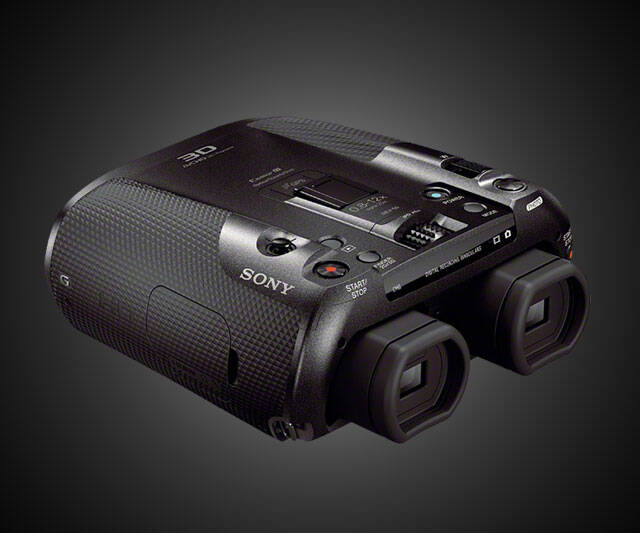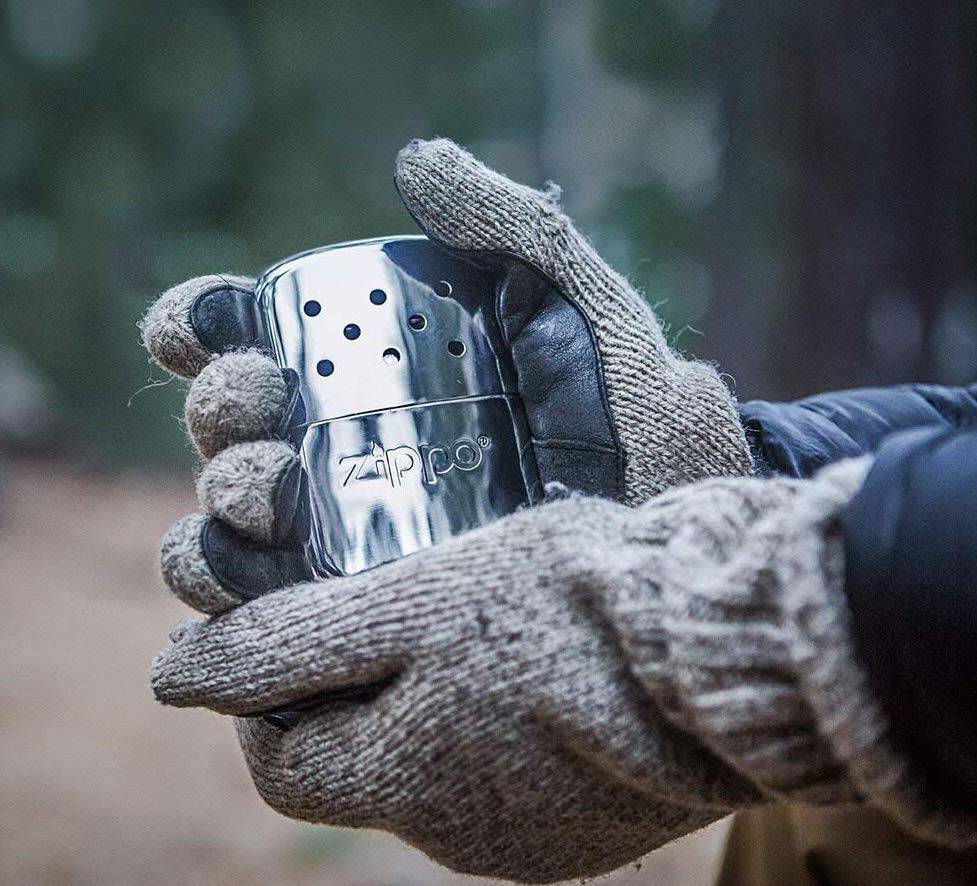Digital Recording Binoculars | ||||||||||
| ||||||||||
Product Description
Observe and capture your WOW moments with Sony DEV-50. Unlike any optical binoculars, these weather-proof digital recording binoculars offer autofocus for tracking of fast moving subjects, an expansive zoom range to get even closer to the action and superior performance in low light with two OLED XGA viewfinders.Features
- Seamless zoom from 0.8x to as high as 25x binocular magnification High resolution, high contrast OLED finder for sharp images even in low light Compact, lightweight body in ruggedized dustproof/rainproof for outdoor use
- Optical Steady Shot image stabilization with Active mode minimizes blur Quickly capture and follow the subject, with autofocus Hyper Gain further enhances low-light visibility
- By Pixel Super Resolution for superior still image quality Double Full HD and 3D movie recording HDMI terminal for viewing on HDTVs
Top Reviews
almost thereby Sean Riddle (4 out of 5 stars)
July 2, 2013
My wife and I bird watch, and we have used Canon image stabilized binoculars for the past 15 years or so. We have been pleased with them, but we have wanted a pair with zoom capabilities, which they do not offer. We also frequently comment on how we'd like to have a photo or video of what we are watching. It's not uncommon for us to go out with binoculars, digital SLR, camcorder and GPS. So a couple of years ago when Sony introduced the DEV-5 recording binoculars, we tried them out for a couple of weeks. They were neat, but we did not feel they were worth the cost. When Sony announced the DEV-50, we wanted to check them out. Here are our thoughts; refer to the marketing info for complete specs.
Like the DEV-5, the DEV-50 is a pair of camcorders in a single case. The DEV-50 looks more like binoculars than the DEV-5, and is quite a bit smaller and lighter. The buttons are well placed, although we still do some hunting, which sometimes results in random camera movements. It has image stabilization and zoom, as well as autofocus. Autofocus is unique for binoculars, but actually works pretty well. You can switch to manual focus when needed.
There are 3 modes: 2D photo, 2D video and 3D video. You select photo or video mode with a button (or menu item); if you are in video mode, you can then choose 3D mode. This is where some user-unfriendliness occurs: while in video mode, you cannot take photos, and while in photo mode you cannot shoot video. You have to switch modes, which takes a few seconds and zooms out fully. If you are in 3D video mode and want to take a picture, you must change to 2D video mode before you can change to photo mode. And photo mode won't replace a digital SLR; it takes 2-3 seconds to store each picture. Having separate buttons for taking photos and shooting video would make sense if you didn't have to change modes, but as it is, it's just confusing.
To differentiate between models, the DEV-50 has a GPS and digital zoom, while the less expensive DEV-30 does not. Unlike the DEV-5, digital zoom in the viewfinders looks pretty good. But photos shot with full digital zoom range in appearance from abstract art to cartoonish. The GPS is used only to put location info into the photos and videos. There is no map display, waypoints, etc. You can pull up a screen with the time and currently triangulated latitude and longitude. This seems to be the only screen that shows the time, which would be useful to have on one of the main displays. The GPS status icon shows up in the viewfinder from time to time, which is a little distracting.
Battery life is pretty good. Leaving the unit turned on and using it as binoculars for about three hours, occasionally photographing or videotaping, the battery still had some charge remaining. An NP-FV70 battery comes in the box, and the larger NP-FV100 battery, which is rated for about twice the capacity, will also work. You do not get a separate charger; you connect the included AC adapter to the binoculars to charge the battery. You can enable power-saving mode in the menu, which will turn off the unit if it is not used for about 5 minutes. But since it takes a few seconds to turn on, this isn't always convenient.
The viewfinders are much brighter and sharper than the DEV-5's, but are still no match for real binoculars; they just aren't high-res enough to show fine detail. The viewfinders turn off when you are not looking through the binoculars, but this is done with a sensor on the left eyepiece. If you cover the eyepieces with your hand (or the included eyecaps) to protect them from dirt or rain, or to keep the sun from shining into them, the viewfinders stay on.
A setting called Hyper Gain is available for viewing in low-light conditions, but the picture is so noisy that it doesn't seem very useful.
We are excited that Sony updated the DEV-5, and we are hopeful they will continue, and that other manufacturers will begin producing recording binoculars. The DEV-50 will likely prove useful in many situations, especially sporting events, but does not replace a good pair of binoculars for bird watching.
joy stick poorly designed
by MJS (3 out of 5 stars)
February 16, 2014
This is a very cool product because it looks like binoculars and takes excellent photos and movies, but for $2K I expected this.
The little joystick that controls the menu broke while in the protective case. It is in a vulnerable position so I am afraid it will break again even after I pay a minimum of $60.00 to Sony for repairs.
Another problem is the very grainy quality of pics taken in the highest zoom modes.
Finally, the battery supplied is about half the size of the battery compartment. There must be a larger, longer lasting battery available.
Aside, why can't Sony and the other biggies make a charging system like those used by android cell phones? It might take longer to charge, but it would be one less charger required when traveling. Ideally, the battery could be charged with the android charger OR the custom one supplied.
Great idea but Sony needs competition in this area
by checazzo (2 out of 5 stars)
July 21, 2014
Pros:
1. Well it does let me record birds when in flight or flitting about in trees, situations in which a conventional camera is useless.
2. Audio is good.
Cons:
1. Over-priced because there is no competition.
2. 3D is superfluous, fad.
3. GPS, you should know where you are, ok for the obsessive.
4. Auto-focus really really bad, I have to routinely use manual focus otherwise things end up a blur.
5. Battery life too short.
6. Menu button a dead loss, it sticks up too far and is too fragile, prone to breaking off which happened with the first one of these units I had.
Five Stars
by mostafa (5 out of 5 stars)
September 14, 2014
Great item
Almost there II
by R. Golub (3 out of 5 stars)
September 21, 2013
In general, I agree with Sean's review about the DEV-50 - a couple of other thoughts
- Where it shines is as a 12x hand held binocular. Nothing I've seen beats it.
- Where it fails as is a general purpose binocular. It's too big of a hassle to use. You have to turn it on (natch) and then wade through the stupid warning screens (don't look too long, don't walk and look). Legal got their hooks in it again. IMHO, battery life is poor. My current use is on our boat, I get perhaps 3 hours of use, mostly as a binocular. Fortunately, I have power on the boat and can use a (non supplied, come on Sony) external battery charger and spare. Since the battery case can hold the larger 100 size battery and since the stupid thing costs $2000, you'd think they could at least spring for the larger battery
- The User Interface is clumsy. The various menus are non intuitive, hampered by the joystick on top of the unit and hard to use while actually holding the binocular. It is typical Japanese, just a bit more work, a bit more minimalist view and a bit more careful thought into how someone actually might use the device and you're there. Here, Sony is in kind of a never never land. It's clearly designed as a consumer product with cute little icons, but pricewise is targeted in the professional range, however it's not nearly as well thought out or flexible as it needs to be. I've casually looked at other bits of Sony consumer electronics and the UI seems to be fairly similar so perhaps a Sonyphile will find it easier to swallow.
- You do look like Luke Skywalker when you're using it. People either giggle or go very quiet as if they expect a laser beam to erupt out of the end and the bear that everyone is looking at to suddenly be enveloped in smoke.
- Still photography is very, very difficult because of the lag. It's like using a point and shoot from 10 years ago. No excuse for that.
- Video is good. Sort of. It's never going to replace a fixed camera on a tripod. The video stabilization works well, but not that well. It's great for quick clips.
Overall, I'm very conflicted about this product. For two thousand dollars I expect both sophistication in hardware - which you mostly get AND the user interface - which is sorely lacking. It's not 2001 anymore. It needs a couple more rounds of iteration before it's really ready for prime time. Unfortunately, given that this is but one of thousands of odd products in the Sony line, it will not get the attention it really needs to be an excellent product
GOOD IN THEORY, NOT VERY WELL IMPLIMENTED
by Chris (2 out of 5 stars)
March 30, 2014
REVIEW OF SONY BINOCULAR MODEL DEV-50
Generally speaking I was saddened at these binoculars because in the past Sony's products had always been awesome to me. While not terrible, at $2,000 the DEV-50 was a definite disappointment.
Even though I'm an electrical engineer, I will "stifle myself" and not give a lot of technical specifications but rather present this review as simply and as short as possible and from a user standpoint.
PROS:
1. Technically speaking these binoculars do live up to all their advertised specifications in that, for example, they technically do have night vision boost. (The problem is that it is so noisy that even in the dark you can see a clearer, albeit darker, image with night vision turned off. You will not be able to see anywhere nearly as well as you can with a good quality night vision binoculars.)
2. The image stabilizer isn't too bad. It works better on 3D than on 2D.
3. When you turn on the 3D you can clearly see that there is more depth than on 2D.
4. Under ideal light and view, the 3D is really spectacular.
5. Also under ideal conditions the 3D video is very lifelike. We shot some party footage of children playing that was enjoyable upon playback. Unfortunately, unless you have some sophisticated home theater equipment, you will be limited to viewing 3D material through the binoculars.
6. They look stylish when you are holding them
7. They feel physically rugged. I don't think they will be too fragile.
8. The auto focus, under ideal conditions, will make the image quite clear. (The main problem with this AF is that you often have to go through a lot of work to get it to kick in. For example, if you are zoomed in and you move from one scene to another, auto focus does not start to work. It just leaves the scene blurry. You have to zoom way out, and then it will focus, and then you can zoom back in. Needless to say this is worse if the scene is even the slightest bit dark, and night vision really messes with the AF.)
CONS:
1. If you wear glasses as I do, you will have a hard time with these binoculars. Unless you take your glasses off you will not be able to get your eyes close enough to the eyepieces for full view. With glasses on, your eyes are so far back that you only see a small viewing spot in the middle of the field.
2. To correct for eyes that need glasses they have a limited ability to vision correct. By turning two levers, one under each eyepiece, they can sharpen the image; however, it is difficult not only to manipulate, but also get any precision. One little click too many to the left or right and it gets totally out of focus for that eye. Then you have to go and do it all over again for the other eye. Since these focus leavers are recessed, they are almost impossible to work while the binoculars are up to your eyes. You have to pull the binoculars away from your eye, look at and adjust the focus lever, and then return it to your eye hopping your focusing guess was good. If not, you have to do it again. If you want to share the binoculars with a friend, who may not have the same eye focus as you, your friend will have to go through the same for their eyes, which of course leaves the settings screwed up for when your friend hands these binoculars back to you.
3. The range of focus that these little lever adjustments can handle is limited. I'm moderately nearsighted (-2.75 diopter correction in my glasses). To get anywhere near clear picture, I have to put the leavers all the way over hard to the left. Since the control levers are all the way over, I'm not sure if that is optimum, but I know if I needed higher correction glasses, as many people do, this Sony DEV-50 would be totally lost.
4. Virtually all the controls are difficult to use for two reasons. First, they have little or no tactile feel so you have to pull the binoculars away from your eyes so you can see what you're doing. Well when you do that, "Good bye view". Very frustrating! Second, the controls are complicated to use. There is lots of hold this while you push and hold that for 3 seconds, etc., and you better be in mode X because if you push the same button while you had left the binoculars in mode Y you will get totally unexpected results. I stuck with it until I figured it all out, but even after I mastered it, if for even one second I lost concentration the binoculars would jump to some bazaar format, and I'd lose track of what I was looking at.
5. While all the features are individually accessible, I was shocked at how many modes there are where so many of the features don't work. There are too many restrictions to list them all, but to give you a general idea, you can only do one type mode of still photography in 2D, but you must only be in this or that other type of mode if you want to shoot video, etc. As another example, zoom is available in both 2D and 3D, but the zoom controls and properties are different depending on which mode you're in; oh yeah, if you have night vision on, the zoom properties change again. This type of restriction and complication relates to many of the other controls besides just the zoom. It will drive you nuts. (How's that for an engineering term?)
6. Do not think that the images with this DEV-50, in either 2D or 3D will be as clear, crisp, or bright as with optical binoculars. When doing side by side looking at landscape, the optical binoculars give a much better and clearer image.
7. Also do not plan on using these binoculars if you are in a quick-change situation, such as being on a nature walk and a bird flees by or kids playing, where you want to quickly grab your binoculars and see/photograph something before it gets away. Remember, these binoculars have to power up, and they go through a looooooooong boot up procedure where they display all kinds warnings like don't view too long in 3D. By the time you are permitted to actually view/photograph something, your subject will probably be long gone.
8. The battery runs down quickly, and there is no external charger included so unless you buy a charger you will have to plug in the binoculars to charge the battery which means you can't view while charging. Even if you have 2 batteries you can not last a full day of viewing, and they charge slowly. Actually they take longer to charge than they last in use. Then at night you will have to remember to get up and change batteries so the second battery will charge. If you forget, the next day you will be limited to the one battery that was in the binoculars.
SUMMARY:
Heavily feature laden. These features work kind of OK, but none of them work impressively well. Complicated to use, with many restrictions on being able to access these features.
Sony DEV-50B 3D Binoculars and Sony HDR-TD30 3D Handycam
by Albert (5 out of 5 stars)
October 12, 2016
I wouldn't sell mine for $10,000.00 , These are some awesome Binoculars, I also own Sony's HDR-TD30 3D Handycam. I've had both for almost 2 years and you can't beat the 3D when watched on their 4KHD TV for clarity & depth. Both of these cameras are the best thing you'll get. I use FV100 batteries and if you want to record and save battery life, remove the left eyepiece and do not block the lens when you're filming, that way the dual displays in the eyepieces will remain off and save power. I film all day using only 2 of the FV-100 batteries per camera. Have never used up 2 completely in a day. I'm just a fan and customer, a very satisfied customer. There are no bad points about these cameras for the price, quality and performance. 1080 per eye, progressive scan 3D, Too bad you all have to take our word for it.
Looking to Buy These
by Amazon Customer (5 out of 5 stars)
May 23, 2018
I absolutely LOVE these. I'm looking to buy another pair actually, if anyone has one they'd be willing to sell!
*If this is not the "Digital Recording Binoculars" product you were looking for, you can check the other results by clicking this link








